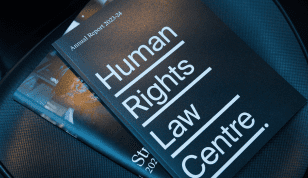Publication of personal photographs: Weighing freedom of expression against privacy
Verlagsruppe News Gmbh and Bobi v Austria [2012] ECHR, Application no 59631/09 (4 December 2012)
Summary
The European Court of Human Rights was asked to weigh the right to freedom of expression against the right of individuals to privacy. The Court found that the decision of a domestic Austrian court to restrain publication of a photograph involving a Catholic priest embroiled in a controversy, but not to grant damages for defamation, was a fair balance between articles 8 and 10 of the European Convention for the Protection of Human Rights and Fundamental Freedoms.
Facts
In July 2004, three issues of the applicant’s weekly news magazine Profil published claims that police had searched a Roman Catholic seminary at St Pölten, Austria, investigating potential possession of child pornography. The articles also claimed that unwanted advances had been made towards seminaries and alleged other “sexual antics between priests and their students”.
A photo the principal of the seminary, Mr Küchl, accompanied two articles. The photo showed Mr Küchl with his left arm around one seminarian’s wrist, and his right hand on the seminarian’s groin.
Mr Küchl pleaded, unsuccessfully at trial and on appeal before domestic courts, that the photograph was personal and therefore compensation should be awarded for its publication. The Courts found that given the prominent role of the Catholic Church in public life, there was public interest in the conduct of its officials and the freedom of expression prevailed.
On appeal in 2005, the Supreme Court granted an injunction to prevent publication of the image on the basis the protection of Mr Küchl’s private life was to be given greater weight than the public interest in being informed of the image. However, the Court permitted the publication of statements that the photographs existed.
Decision
The European Court of Human Rights followed a recent decision in Von Hannover v Germany (no 2) [2012] ECHR 228 (7 February 2012), which sets out the principles the Court will consider in balancing the right to freedom of expression with the right to respect for private life. The criteria a Court will consider include: whether there was a contribution to a debate of general interest, the subject of the image, the conduct of the person involved, whether the individual concerned was a public figure, how the photograph was obtained, the content and consequences of publication and the severity of the injunction.
The Court accepted that there is public interest in the actions of officials of the Catholic Church, particularly when the conduct of those officials is inconsistent with Church teaching. The Court also noted that the publication of photographs fell within the accepted understanding of freedom of expression. The public interest in the role of the press disseminating information was also noted by the Court. A significant distinction in the Court’s view was the difference between reporting about a public figure, which can contribute to debate in a democracy, and reporting about a person who does not exercise public functions. Although Mr Küchl occupied a senior role, the Court found this did not qualify him as a public figure.
The Court held that control of a person’s image is central to their privacy, and individuals have a right to control use of their own image, including by preventing its publication. That the photo was taken at a private birthday party was also relevant and supported the view the photograph was not intended for a wider audience. The photograph was clearly obtained without Mr Küchl’s consent.
The European Court of Human Rights agreed with the view of the Austrian Supreme Court, holding that the photograph contained information that was private, that sexual relationships fall within the sphere of protection of article 8, and that such protection applies to dignitaries of the Church whatever that organisation’s view was on personal relationships. The right to privacy should prevail because, in the Court’s view, it was possible to inform the public without providing the photograph. Accordingly, the Court found that there had been no breach of article 10 of the Convention in preventing the publication of the image.
The Court also agreed that refusing to allow damages was proportionate in light of the fact the publisher was genuinely uncertain whether publishing the image would breach the law.
Commentary
The Charter of Human Rights and Responsibilities Act 2006 (Vic) protects both privacy and freedom of expression. There can be a tension between the two rights as illustrated by this case. The conflict between the two principles is particularly prominent in situations involving issues that are clearly within the private sphere but also have a public interest element.
This decision can be found online at: http://hudoc.echr.coe.int/sites/eng/pages/search.aspx?i=001-115013.
Jim Tapp was a summer clerk at King & Wood Mallesons.

UK government official whistleblower wins unfair dismissal case against UK government
Ms C Stewart v Foreign, Commonwealth and Development Office: 2204590/2022. A senior UK government official turned whistleblower succeeded in a claim for unfair dismissal against her employer.
Read more
Federal Court rules against injunction to prevent animal cruelty in Victorian abattoir
The Game Meats Company of Australia attempted to stop Farm Transparency International Ltd from publishing a 14-minute video depicting alleged "extreme animal cruelty" obtained by a hidden camera.
Read more
The right to a fair and public trial: considering a private meeting between a judge, complainant, and counsels for the prosecution and defence without the accused present
The High Court on 11 September 2024 overturned a decision made by the Court of Appeal of the Supreme Court of Victoria regarding issues of criminal procedure. The issue of criminal procedure concerned a meeting between the complainant, the judge, and counsel for both the prosecution and the accused (the accused being the respondent to this appeal) on the day before the judge presided over a special hearing to take the evidence of the complainant.
Read more



